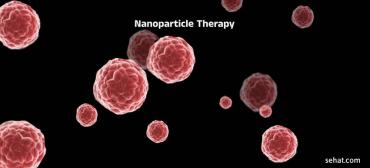Treating Aged or Sun-Damaged Skin
What is photoaging?
Excessive exposure to the sun early in life can make a person look older than he/she really is. This premature wrinkling and skin damage from sun exposure is called photoaging. Photoaging, unlike natural aging, results in coarse, dry skin; freckling and skin discoloration; leathery skin; and deep wrinkles.
Treatment for sun-damaged skin
To minimize the effects of photoaging:
-
Your age, overall health, and medical history
-
Severity of the skin damage
-
Type of skin damage
-
Your tolerance for specific medications, procedures, or therapies
-
Your opinion or preference
No one can avoid the natural process of aging, as the skin thins and lines and wrinkles appear. Moles, scars, and birthmarks also tend to change as we age. In addition, sun damage over the course of a lifetime worsens the aging skin. Although there are many anti-aging creams on the market, advanced signs of aging and sun damage sometimes require more invasive dermatological procedures, including the following:
-
Botulinum toxin type A An injection of botulinum toxin (a complex type of protein) into specific muscles will immobilize those muscles, preventing them from forming wrinkles and furrows. The use of botulinum will also soften existing wrinkles.
-
Chemical peels Chemical peels are often used to minimize sun-damaged skin, irregular pigment, and superficial scars. The top layer of skin is removed with a chemical application to the skin. By removing the top layer, the skin regenerates, often improving its appearance.
-
Collagen injections A type of collagen that is derived from purified bovine (cow) collagen is injected beneath the skin to replace the body's natural collagen that has been lost. Injectable collagen is generally used to treat wrinkles, scars, and facial lines.
-
Dermabrasion Dermabrasion may be used to minimize small scars, minor skin surface irregularities, surgical scars, and acne scars. As the name implies, dermabrasion involves removing the top layers of skin with an electrical machine that abrades the skin. As the skin heals from the procedure, the surface appears smoother and fresher.
A gentler version of dermabrasion, called microdermabrasion, uses small particles passed through a vacuum tube to remove aging skin and stimulate new skin growth. This procedure works best on mild to moderate skin damage and may require several treatments.
-
Intense pulsed light (IPL) therapy Intense pulsed light (IPL) therapy is different from laser therapy in that it delivers multiple wavelengths of light with each pulse (lasers deliver only one wavelength). IPL is a type of nonablative* therapy.
-
Laser skin resurfacing Laser skin resurfacing uses high-energy light to burn away damaged skin. Laser resurfacing may be used to minimize wrinkles and fine scars. A newer treatment option is called nonablative resurfacing, which also uses a laser as well as electrical energy without damaging the top layers of skin.
*Nonablative dermatological procedures do not remove the epidermal (top) layer of the skin. Ablative procedures remove the top layers of skin.
Related Questions
Itch and Rash in the Groin Area - Male
- 3193 Days ago
- Skin Rash - Skin & Hair Care
Hair transplant donor area issue
- 3210 Days ago
- Hair Loss - Skin & Hair Care
Jock itch Groin
- 3255 Days ago
- Dry Skin - Skin & Hair Care
Serious Hair problem
- 3270 Days ago
- Hair Loss - Skin & Hair Care
Hair damage
- 4283 Days ago
- Skin & Hair Care





















